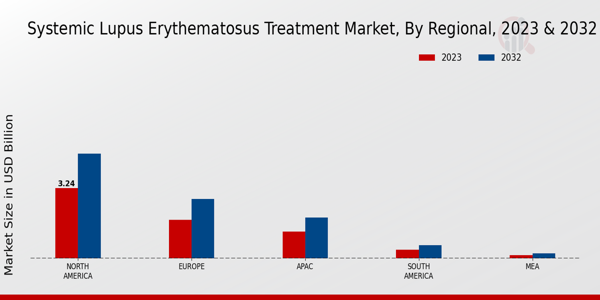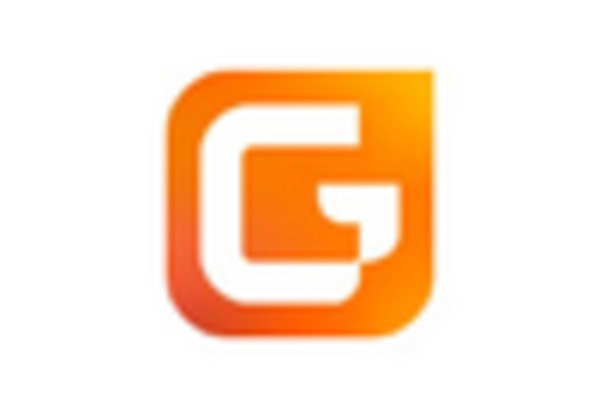Rising Healthcare Expenditure
The upward trend in healthcare expenditure is another crucial driver for the Systemic Lupus Erythematosus Treatment Market. As countries allocate more resources to healthcare, there is a corresponding increase in funding for research and development of new treatments for chronic diseases like SLE. According to recent data, healthcare spending is expected to rise significantly, with a focus on improving patient outcomes and access to advanced therapies. This financial commitment facilitates the development of innovative treatment options and enhances the availability of existing therapies. Consequently, patients are more likely to receive timely and effective treatment, which is essential for managing SLE and reducing the overall burden of the disease on healthcare systems.
Innovations in Treatment Modalities
The Systemic Lupus Erythematosus Treatment Market is witnessing a surge in innovative treatment modalities, which is a significant market driver. Recent advancements in biologics and targeted therapies have transformed the therapeutic landscape for SLE. For instance, the introduction of monoclonal antibodies and small molecule inhibitors has provided new avenues for managing the disease. These innovations not only enhance treatment efficacy but also improve patient quality of life. The market is projected to grow as pharmaceutical companies invest heavily in research and development to bring forth novel therapies. Furthermore, the increasing number of clinical trials aimed at evaluating new treatment options indicates a robust pipeline that could potentially reshape the SLE treatment paradigm in the coming years.
Regulatory Support for Drug Approvals
Regulatory support for the approval of new drugs is a significant driver for the Systemic Lupus Erythematosus Treatment Market. Regulatory agencies are increasingly recognizing the need for expedited pathways for the approval of therapies targeting rare and chronic diseases like SLE. This support can lead to faster access to innovative treatments for patients, thereby enhancing the overall treatment landscape. The establishment of programs aimed at facilitating the development of orphan drugs and biologics is indicative of a favorable regulatory environment. As a result, pharmaceutical companies are more likely to invest in SLE research and development, knowing that there is a supportive framework for bringing new therapies to market.
Increased Patient Advocacy and Support Groups
The role of patient advocacy and support groups is becoming increasingly prominent in the Systemic Lupus Erythematosus Treatment Market. These organizations play a vital role in raising awareness about SLE, educating patients and healthcare providers, and advocating for better treatment options. Their efforts contribute to a more informed patient population, which can lead to earlier diagnosis and treatment initiation. Additionally, these groups often collaborate with pharmaceutical companies and researchers to ensure that the needs of patients are considered in the development of new therapies. As awareness grows, the demand for effective treatments is likely to increase, further driving market growth and encouraging investment in SLE research.
Growing Prevalence of Systemic Lupus Erythematosus
The increasing incidence of Systemic Lupus Erythematosus (SLE) is a primary driver for the Systemic Lupus Erythematosus Treatment Market. Recent estimates suggest that SLE affects approximately 1.5 million individuals in the United States alone, with a higher prevalence among women, particularly those of African American, Hispanic, and Asian descent. This rising prevalence necessitates the development and availability of effective treatment options, thereby propelling market growth. As the understanding of SLE expands, healthcare providers are more equipped to diagnose and manage the condition, which further contributes to the demand for innovative therapies. The growing patient population is likely to stimulate research and development efforts, leading to the introduction of novel treatment modalities that cater to the unique needs of SLE patients.


















Leave a Comment